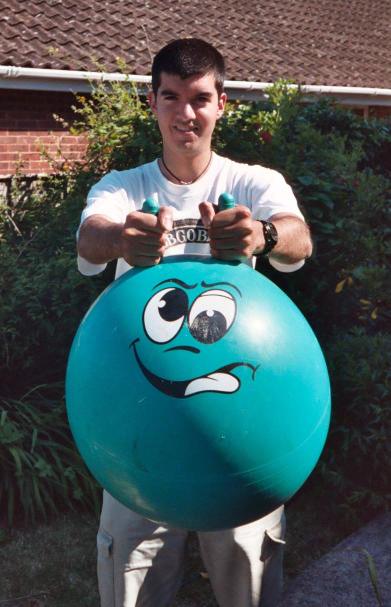
"The technique I've found most effective is to run many simultaneous debugging sessions in parallel. My debugger of preference is a semi-autonomous intelligent agent that seeks out defects in a random fashion. I call this type of agent a 'user'." --Slashdot, author unknown
-funroll-loops
Unroll loops whose number of iterations can be determined at compile time or
upon entry to the loop. This option makes code larger, and may or may not
make it run faster.
--from the gcc manpage
What I do |
I'm a postdoc working in the field of robotic telescopes. Although physically based at the University of Exeter astrophysics group, I am employed by Las Cumbres Observatory, a non-profit organisation based in Santa Barbara, California that aims to build a large robotic telescope network for astronomy and education. A brief summary of my research and work for LCO can be found here.
My PhD thesis, entitled "Optimal Observing of Astronomical Time Series using Autonomous Agents", was submitted to the University of Exeter in September 2007. I was jointly supervised by Professor Tim Naylor and Dr. Alasdair Allan. See the abstract below for a brief summary. Alternatively, you can experience the full gory details here ( PDF, 3.2MB).
"This thesis demonstrates a practical solution to the problem of effective observation of time-varying phenomena using a network of robotic telescopes. The best way to place a limited number of observations to cover the dynamic range of frequencies required by an observer is addressed. An observation distribution geometrically spaced in time is found to minimise aliasing effects arising from sparse sampling, substantially improving signal detection quality. Further, such an optimal distribution may be reordered, as long as the distribution of spacings is preserved, with almost no loss of signal quality. This implies that optimal observing strategies can retain significant flexibility in the face of scheduling constraints, by providing scope for on-the-fly adaptation. An adaptive algorithm is presented that implements such an optimal sampling in an uncertain observing environment. This is incorporated into an autonomous software agent that responds dynamically to changing conditions on a robotic telescope network, without explicit user control. The agent was found to perform well under real-world observing conditions, demonstrating a substantial improvement in data quality for this mode of observing. As an example of an observing programme performed in the classical visitor mode of a non-robotic telescope, a survey of temporal stellar variability in the 13 Myr-old cluster h Persei is described. The inherent problems of such an observing programme are explored. Nevertheless, a significant fraction of the cluster members are found to be variable. Importantly, these variable members are found to lie almost entirely below the radiative-convective gap, suggesting a possible link between the change in energy transport in the stellar core and the topology of the surface magnetic field."
Some (outdated) information about my thesis work.
A poster presented at NAM 2008, Belfast. This poster was made entirely in LaTeX. You can get the source code here.
A list of my scientific publications.
Other things |
Why instant messaging is stupid.
Why generic skills training can't be taken seriously.
Why word processors are stupid.
Negative Eric (from my long-gone undergrad days when I was in the grind/doom metal band Blunt. We tried adding ourselves to wikipedia but were summarily deleted).
Also negative Eric...
An example of some music I made once.
My wikipedia page.
My public key. Contact me directly (saunders AT astro.ex.ac.uk) if you know what this is and want to verify the key.
The computing tutorial series being run by Dave Acreman and myself.
The future for Google?
Some photos from the Exeter Gradschool (2007).